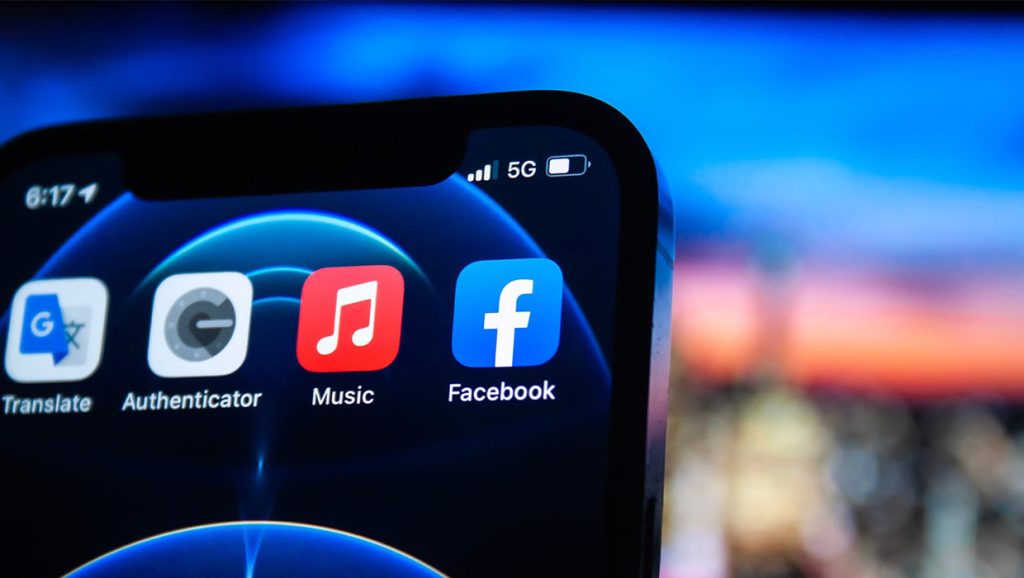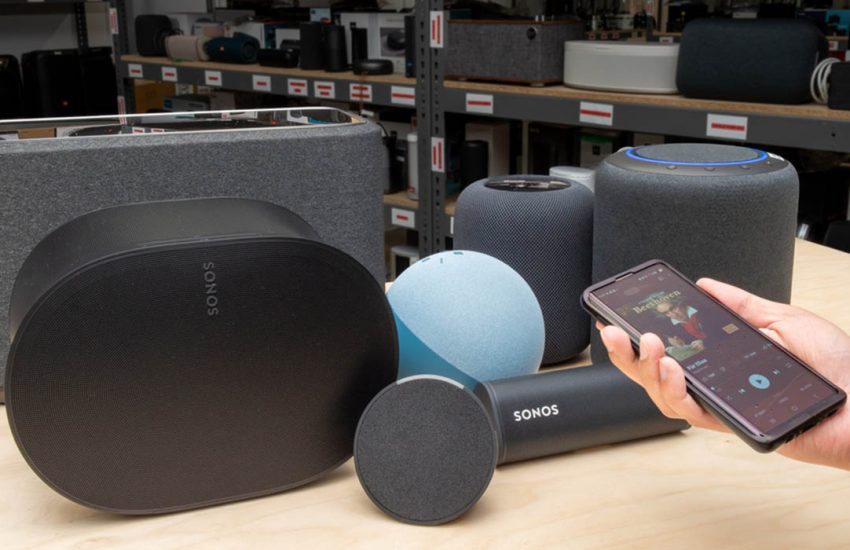Exploring 5G: The Next Generation of Mobile Networks
The journey to 5G is one paved with remarkable technological advancements. To truly appreciate the significance of 5G, it’s essential to look back at the evolution of mobile networks.
Gazelle.com – Buy Smart. Sell Easy.
Trade in your old phone, tablet, or laptop at Gazelle.com and get instant cash offers.
Or shop certified pre-owned devices that look and work like new — all fully tested and guaranteed.
Simple. Secure. Sustainable.
The Era of 1G and 2G
The first-generation (1G) of mobile networks brought us analog cellular technology, allowing voice calls for the first time without being tethered to a landline. However, these networks were limited in capacity and prone to interference.
The transition to second-generation (2G) networks introduced digital communication. This was the era of GSM (Global System for Mobile Communications) and CDMA (Code Division Multiple Access) technologies, which improved voice quality and introduced the revolutionary concept of Short Message Service (SMS).
The Emergence of 3G
The turn of the millennium saw the rollout of third-generation (3G) networks, a significant leap forward. 3G brought high-speed data transmission, enabling mobile internet access, video calls, and multimedia messaging. This era marked the birth of mobile data as we know it today.
The 4G LTE Revolution
With the advent of fourth-generation (4G) Long-Term Evolution (LTE) networks, mobile data speeds skyrocketed. LTE offered unprecedented download and upload speeds, making high-definition video streaming and app-based services a reality. The 4G era laid the foundation for modern mobile apps, transforming the way we live and work.
The Need for 5G
While 4G LTE has served us well, the explosive growth of mobile data, coupled with emerging technologies like the Internet of Things (IoT), autonomous vehicles, and augmented reality (AR), highlighted its limitations. 5G emerged as the solution to meet the escalating demands of the digital age.

Understanding 5G Technology
One of the defining features of 5G is its use of millimeter-wave frequencies. Unlike 4G, which primarily operates in lower frequency bands, 5G taps into much higher frequencies. These millimeter waves enable faster data transfer due to their shorter wavelength.
Massive MIMO
Massive Multiple Input, Multiple Output (MIMO) technology is another crucial aspect of 5G. MIMO involves using multiple antennas for both transmitting and receiving data. In 5G, this technology is scaled up to include a massive number of antennas, allowing for more efficient data transfer and enhanced network capacity.
Beamforming
Beamforming is a technique that focuses radio waves in a specific direction rather than broadcasting them in all directions. With 5G, beamforming is used to target devices more precisely, improving signal strength and reducing interference.
Network Slicing
5G introduces the concept of network slicing, which allows network operators to divide a single physical network into multiple virtual networks. Each virtual network can be customized to meet the specific requirements of different applications, from ultra-reliable low-latency communication for critical tasks to high-bandwidth connections for streaming services.
The Benefits of 5G
One of the most immediate and tangible benefits of 5G is its speed. With 5G networks, users can download large files, stream 4K and 8K videos, and engage in high-bandwidth activities with minimal delay. This speed is set to transform how we consume and share content.
Low Latency
Low latency is a game-changer for applications that require real-time responsiveness. In sectors like gaming, telemedicine, and autonomous vehicles, the reduced latency of 5G is crucial for ensuring seamless, lag-free experiences.
Enhanced Reliability
5G networks are designed to be incredibly reliable. This reliability is essential for applications where downtime is not an option, such as industrial automation, emergency services, and critical infrastructure.
Greater Capacity
As more devices become connected, the capacity of mobile networks must expand. 5G offers significantly greater capacity than its predecessors, accommodating the growing number of IoT devices and the ever-increasing demand for data.
5G Use Cases
The Internet of Things, which encompasses everything from smart homes and connected vehicles to industrial automation, relies on 5G’s capacity and low latency to function seamlessly.
Augmented Reality (AR) and Virtual Reality (VR)
AR and VR applications require high-speed, low-latency networks to deliver immersive experiences. 5G makes it possible to enjoy AR and VR without the cumbersome wires and lag.
Telemedicine
Telemedicine has gained prominence, especially in the wake of global health crises. 5G enables high-quality video consultations, remote monitoring, and even telesurgery, revolutionizing healthcare delivery.
Autonomous Vehicles
Self-driving cars rely on real-time data from sensors and other vehicles. 5G networks provide the low latency and high bandwidth needed to make autonomous vehicles safe and efficient.
The Impact on Healthcare
Telemedicine has emerged as a game-changer in healthcare, allowing patients to consult with healthcare providers remotely. With 5G, these consultations can be conducted in high definition, enabling more accurate diagnoses and treatment recommendations.
Remote Monitoring
5G facilitates real-time remote monitoring of patients’ vital signs, making it possible for healthcare professionals to track patients’ health continuously. This is particularly valuable for individuals with chronic illnesses.
Telesurgery
Telesurgery, a field where surgeons operate on patients located miles away, relies on ultra-low latency and high-speed networks. 5G’s capabilities make telesurgery safer and more practical.
5G in Autonomous Vehicles
Vehicle-to-Everything (V2X) communication is essential for the safe operation of autonomous vehicles. 5G enables cars to communicate with each other, infrastructure, and pedestrians in real time, enhancing safety on the roads.
High-Definition Mapping

Autonomous vehicles rely on high-definition maps to navigate accurately. 5G networks make it possible to download and update these maps quickly, ensuring that self-driving cars always have access to the latest data.
5G and the Entertainment Industry
5G’s fast speeds and low latency are a boon for the entertainment industry. Users can stream content in stunning 4K and 8K resolution without buffering, offering a more immersive viewing experience.
Cloud Gaming
Cloud gaming platforms leverage 5G’s capabilities to deliver console-quality gaming experiences on mobile devices. Gamers can play resource-intensive titles without the need for high-end hardware.
Challenges and Concerns
The rollout of 5G networks introduces new security challenges. With more devices connected to the internet, the attack surface expands, making it essential to develop robust cybersecurity measures.
Privacy
As 5G enables more data to be collected and analyzed in real-time, privacy concerns become paramount. Striking a balance between harnessing the power of 5G and protecting individuals’ privacy is a challenge that regulators and technology companies must address.
Infrastructure Deployment
The widespread deployment of 5G infrastructure is a monumental task. Building the necessary network infrastructure, including small cell towers and fiber-optic connections, requires significant investment and coordination with local authorities.
Digital Divide
While 5G promises transformative benefits, there’s a risk of exacerbating the digital divide. Access to high-speed networks should be equitable to ensure that everyone can enjoy the advantages of 5G, regardless of their location or socioeconomic status.
5G Rollout Around the World
Several countries have emerged as leaders in the race to deploy 5G networks. China, South Korea, the United States, and several European nations have made substantial progress in rolling out 5G infrastructure.
Challenges in Deployment
Despite significant progress, challenges persist in the global deployment of 5G. Regulatory hurdles, spectrum allocation, and infrastructure development can slow down the rollout process.
The Future of 5G
As 5G continues to evolve, its impact on industries and society as a whole will become more profound. Beyond enhanced mobile broadband, 5G will enable new applications and innovations that are difficult to predict fully.
The Future of Connectivity
While 5G is the current focus of innovation, research into sixth-generation (6G) networks is already underway. 6G is expected to push the boundaries of wireless connectivity, with even faster speeds, lower latency, and novel use cases.
Ubiquitous Connectivity
The future of connectivity envisions a world where high-speed, low-latency networks are available everywhere, connecting not only devices but also everyday objects and even our own bodies. This level of connectivity will redefine how we live, work, and interact with the world.
The Digital Transformation
The widespread adoption of 5G and its successors will accelerate the digital transformation of industries across the board. From manufacturing and healthcare to transportation and entertainment, every sector will undergo profound changes.
In the ever-evolving landscape of mobile communication, 5G represents a significant milestone. Its promise of faster speeds, lower latency, and greater capacity opens the door to a new era of innovation and connectivity.
As we continue to witness the rollout of 5G networks worldwide, it’s essential to address the challenges and concerns that accompany this technological revolution. Ensuring security, privacy, and equitable access to 5G services will be key to harnessing its full potential.
Looking ahead, we can only imagine the transformative impact that 5G, and its successors, will have on our lives. From enabling cutting-edge healthcare solutions to powering autonomous vehicles and redefining entertainment, the possibilities are boundless. As we stand on the threshold of this new era, it’s an exciting time to be part of the ever-evolving world of technology and connectivity.


